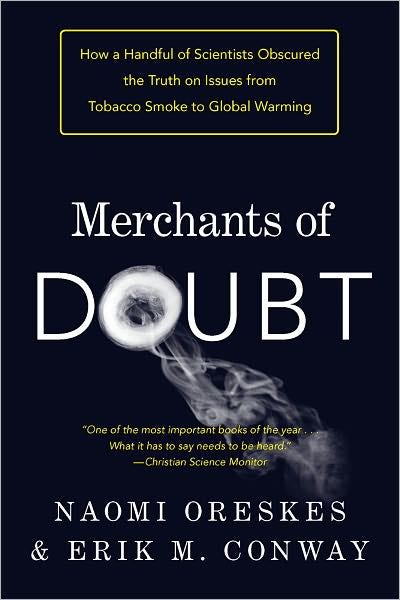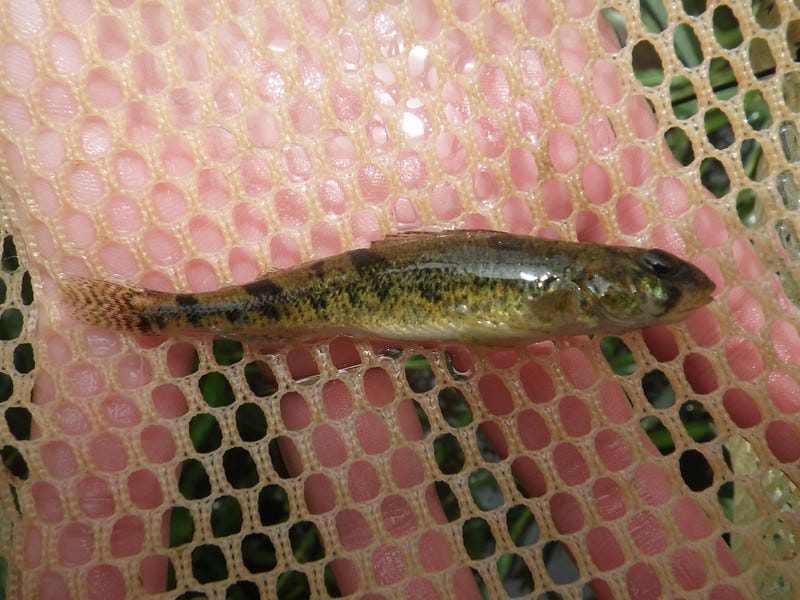Until just a few years ago, household furniture and other products probably unnecessarily poisoned us. Following flammability standards, many manufacturers believed, required infusing them with several pounds of flame retardants, a range of chemicals believed to be both toxic and carcinogenic. Fire testing evidence, however, were mixed. But they persisted in household products for decades.
While wading in the Little Tennessee River in the 1970s, a biologist discovered a small, minnow-like fish. The fish, known as the snail darter, became the first major test of the new Endangered Species Act. Its existence helped environmentalists halt the construction of the Tellico Dam, which was by then already 90 percent complete. Not only did it end up that the species wasn’t really endangered, it was an imposter. Small minnows swam the Little Tennessee River, but they weren’t snail darters, because such a species may have never even existed.
Both these cases involve governmental policies being built upon questionable storytelling and dubious science. But I bet most readers were more familiar with the first case, or ones like it, than the second. According to one storyline, flame retardants persisted because of industry meddling, because business sowed doubt about the toxicological studies in order to hold regulation at bay.

The threat of “merchants of doubt” has become a focal point of American politics in the last decade or so. The concept likely even set the stage for today’s handwringing over misinformation and the so-called post-truth era.
As useful as the “doubt merchant” label may have been for describing how many industries have responded to the threat of regulation, it overly simplifies the relevant politics. Even worse, the concept’s underlying narrative blinds us to the fact that politics is equally harmed by the trafficking of ostensible factual certitudes, the questionable use of expertise to quash dissent and to portray certain policies as unavoidable conclusions of simply following the science.
“Saving” Babies Through Chemistry
Flammability standards developed in the 1970s, such as TB-117 in California, left manufacturers little other choice than to douse their products in flame retardants. Their wares had to withstand exposure to an open flame, like a match or a lit candle, for several minutes. Although this isn’t a particularly normal situation, it’s a very exacting standard, which is why I suspect that it might have been an unintended consequence of the increasingly powerful consumer protection movement of the era led by figures such as Ralph Nader.
As the documentary, Merchants of Doubt, shows, efforts to revise standards in the 2010s met with stiff resistance from the chemical industry. Removing the pounds of flame retardants in every piece of furniture added up to a lot of lost revenue.
One of the key witnesses for the industry at governmental hearings was a doctor named David Heimbach. Dr. Heimbach was fond of telling a particular story in his testimony, recounting his experience treating a severely burned infant whose mother had carelessly placed a candle in the crib as the baby slept. The baby died after three weeks of misery in the hospital, according to Heimbach, all because the pillow she slumbered on did not contain any fire retardants.
As far-fetched as that story might seem, journalists interviewed in Merchants of Doubt contend that it helped sway decisionmakers to hold off on altering flammability standards. But investigative reporters couldn’t locate any patient matching Dr. Heimbach’s descriptions. Heimbach himself argued that he told composite anecdotes, ones made up of features from different patients, something he did to protect patient privacy. When a reporter called him at home, the doctor argued, “The details don’t matter. The principle matters: Flame retardants work.”
But evidence was actually mixed. In experiments matching real life conditions, upholstery catches fires and overwhelms any flame retardants within a piece of furniture’s foam. At the same time, Dr. Heimbach was being paid by “Citizens for Fire Safety,” a front group for the manufacturers of flame retardants.
No doubt this all seems at least a little sketchy, though it’s not at all surprising that companies facing dramatic declines in revenue would resort to such strategies to try to avert or slowdown policy change. It certainly helps activists seeking to reduce citizens exposure to household toxics know the lengths that industry will go, and the kinds of strategies they will employ.
Yet, every time I have assigned to students excerpts from Merchants of Doubt, both the documentary and the book by Naomi Oreskes and Eric Conway, I end up spending months trying to undo the resulting damage. Students come away thinking that good things (read: the policies they thing should be enacted) don’t happen simply because malicious and deep-pocketed actors have polluted the informational space.
As comforting of a viewpoint that might be, and whatever kernel of truth there is to it, it is a grossly simplifying understanding of politics. Even for the case of flame retardants, ambiguous fire science studies didn’t prove that flame retardants never worked. And, even then, one had to balance that uncertain science with equally partial studies about their purported health harms. Which cancers among firefighters could be attributed to flame retardant chemicals? How concerned should we be about them turning up in breast milk. Although, no doubt, some political actors gain from amplifying these uncertainties, that doesn’t mean that gaps in scientific knowledge aren’t there or that they aren’t significant.
The Merchants of Doubt narrative blinds us to two realities. First, ignorance, uncertainty, and doubt are normal for most contentious political issues, not just something dishonestly sown by bad actors. Second, a great many groups actually benefit politically from trafficking scientific certitudes, and not just business.
Inventing Species?
The 1973 update to the Endangered Species Act (ESA) was passed with almost unanimous support. Given today’s culture warring over the environment, it is easy to forget that, as recent as the 1970s, environmentalism was once a bipartisan issue. The legislators who reached across the aisle, however, had set a trap for themselves. They had no idea how powerful, or who contentious, the law would become.

It was David Etnier, a biologist and dam opponent, who first discovered the snail darter and gave the fish its name. Signs that Etnier the scientist was difficult to disentangle from Etnier the dam opponent were clear early on. He told one local resident, “Here’s a little fish that might save your farm.”
The fish was later discovered swimming in other rivers, but at the time it was believed that the Little Tennessee River was its only home. This turned the river, in the language of the ESA, into a “critical habitat.” Following the letter of law would kill the Tellico Dam. The Supreme Court even sided with the snail darter. An exemption had to be explicitly passed by Congress.
The snail darter story is told in countless environmental science and law books, most of which take it for granted that the fish was a unique species threatened by the dam. That’s what the best available science told us, right? Then in 2015, the fish was discovered in neighboring states, locations too distant for the species to have migrated.
A study published only this year presents seemingly damning evidence that the snail darter doesn’t exist. The researchers report that sister darter species usually show considerable genetic divergence, between 0.360 and 0.833 in the measure that they use. The divergence between snail darter samples and the stargazing darter is only 0.078.
What’s more the two fishes resemble one another to a far greater extent than when compared to other darter species. As one of the researchers told the New York Times, earlier scientists probably “squinted their eyes a bit” in order to see a degree of uniqueness that wasn’t really there. In this case, it seems that it would have been better if someone had expressed doubts in the 1970s about the soundness of the biological studies of the snail darter.
Certainly it’s possible that future biologists might still overturn this year’s study. But my point is that scientific certitudes get exaggerated for politically motivated reasons just as easily as research uncertainties do, and that the story of the snail darter is uncomfortably similar to that of Dr. Heimbach’s burned infant.
Industries, no doubt, have an interest in finding knowledge gaps in order to prevent restrictions, as well as in making up anecdotes to protect their products. They want to keep their options open.
Opponents, in contrast, desperately want science to help them foreclose options. They want “the facts” to support a politics of “there is no alternative.” Conservation biology tells us we must stop this dam or that housing development. But, in most cases, science can only be so decisive if we squint our eyes a bit and ignore all the inconvenient incongruities.
Since the snail darter episode, multiple efforts have sought to weaken the power of the ESA. There exists a so-called “God Squad” that can exempt projects from the laws restrictions, but it rarely acts. Most recently the Trump Administration has sought to redefine the implementation of the law to restrict protections to prevent only direct harm to endangered species. If they get their way, harm to habitats may no longer fall under the ESA’s purview, which would swing the pendulum in the opposite direction and make conservation work exceeding difficult. Part of me wonders if this is simply where such a far-reaching and technocratic law was destined to head to.
Between Doubt and Certitude
The courtroom long ago surpassed legislative halls as the primary venue for modern politics. The increasing scientific and technical complexity of our reality has seemed to exceed the capabilities of legislators, who in response write vague laws that then have to be interpreted by state bureaucrats and by expert witnesses in legal challenges.
That has been a gross mistake. Certainly science can and should be an input into governmental decisions. But, as wrangling over potential chemical bans and heated disputes over endangered species listings show, putting expertise in the drivers seat hasn’t made politics any more productive, even if a great number of citizens now pine for a future in which everyone comes to accept factual reality (read: the reality that they personally think science shows).
Our political culture can’t help but misuse science, for facts become blunt weapons, used not to enlighten but instead to get the law on one’s own side.
The outcome has been a political culture characterized by “legalistic antagonism,” the hope that an expert-driven application of the law will usher in the *right* world, the kind of society that one side believes to be self-evidently correct, while doing everything possible to try to ensure that the other side gets nothing that they want. It is a political culture that believes that there is one unequivocally correct answer to political questions, one that can be deduced as if it were the result of a geometric proof.
But that very political culture can’t help but misuse science, for facts become blunt weapons, used not to enlighten but instead to get the law on one’s own side. Uncertainty transforms from an impetus to develop new and exciting research questions, into a strategic asset in negotiations. After years spent researching and debate scientific and technological controversies, I can’t help but think that we’d be better off if we actually tried to get science out of politics, or at least kept it at arm’s length.
In a recent interview, Kierán Suckling, the head of the conservation NGO called The Center for Biological Diversity, pines for a Trump-like president. Except, he hopes for one who unilaterally wields executive power not in pursuit of mass deportations or to punish the country’s prestigious universities but to aggressively conserve nature. Most political scientists see Trump’s reliance on executive actions as continuing a worrisome decline in America’s democratic norms. Suckling, however, justifies a future with iron-fisted conservationist president, because his actions would be, of course, “supported by the best available science.”






